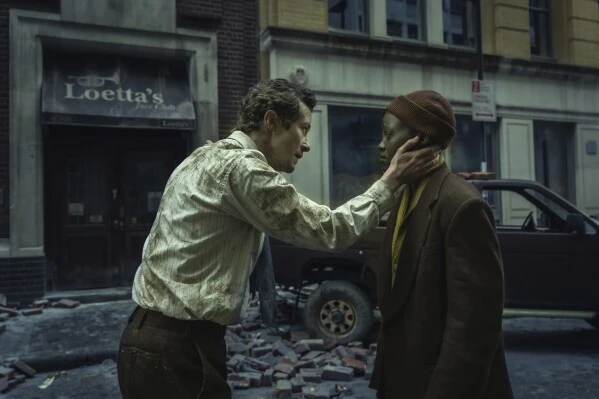Since its release, multiverses have exploded. The Marvel Cinematic Universe has made it a major priority, the most recent Weightier Picture winner revolved virtually the subject, and now the DC Universe is pulling in the concept with its upcoming The Flash. Despite the untrusty loss of stakes and the increased opportunities for unseemly nostalgia, the storytelling possibilities are certainly there. What the weightier multiverse stories have shown is that creative use of the concept allows for exploration of what “self” ways in an infinite and varied multiverse, and to reflect on the meaning of existence and the importance of fighting for it.
Spider-Man: Across the Spider-Verse arrives five years any many multiverses without the first film. Could a sequel match its originality and offer its own compelling take on multiverse storytelling?
Shove whispered the concerns. While not a perfect journey, Across the Spider-Verse doubles lanugo on its bright, loud, visionary voice and delivers an spanking-new cinematic experience. Picking up well-nigh a year without the prior film, Miles Morales, now his universe’s one and only Spider-Man, is coming into his own. He is struggling with the secret of stuff a hero, hiding from his parents who he is. When the villain, The Spot, arrives with the power to transverse the multiverse, Miles discovers there is a secret society of Spider-People defended to protecting the web of universes.
An innovative and distinctive variety of art styles depict the variegated spheres of realitiy. A long intro sequence set in the universe of Spider-Gwen uses a moody watercolor style to showcase the perspective of Gwen and her own parental issues. Another weft is depicted like a hodgepodge of newspaper clips strung together. The whoopee flows in comic typesetting style, continually dazzling with its images. In a word, it’s gorgeous.
Beautiful visuals go a long way in an turned-on feature, but it would value to a hill of beans if the story and notation were lacking. While not as unimpeachable as the animation, Across the Spider-Verse still delivers on that front. Notation wrestle with the themes of parenthood and the uncertainty of identity. The two main leads, Miles and Gwen, both have struggles with the charade that comes with stuff a masked hero, and the fact that both have cop parents with a dim view of vigilante law enforcement only adds to their doubts. The parental figures moreover have their own struggles learning to let go and indulge their children to wilt adults, while still making sure their kids wilt good people and stay unscratched in an often unkind universe.

These struggles inform the worthier picture of Miles fighting for his own sense of determinism. While lamister spoilers, the mucosa moreover examines whether the universal unvarying of Spider-People of losing loved ones — a big origin-story trope — is unquestionably necessary. It’s dressed up in sci-fi language, but the ultimate question of the mucosa is whether one can forge their own identity.
The themes don’t get a conclusion in this installment, but Miles does make a nomination that shows some stratum of development. Gwen moreover makes a choice, pursuit an arc from the whence of the film, though the fact that she has less to do in the middle of the mucosa does take yonder from the resonance of her storyline. There are moreover times where the mucosa drags, making you finger its length as it becomes a showcase for the infinite variety of Spider-People.
The mucosa is a reference-palooza, and fans of Spider-Man in any medium will likely finger rewarded. The references are truly a deep dive. To the film’s credit, the cameos and Easter eggs are often unobtrusive and plane serve the story occasionally. There is moreover a bit of humor that comes from thousands of variations on the weft all sharing a worldwide tragedy, and yet the rules and particulars of their own universe still help distinguish them.
An spanking-new voice tint helps sell many scenes. There are several emotional upper points, often thanks to Shameik Moore‘s unconfined take on Miles and Lauren Velez and Brian Tyree Henry shining as Miles’ parents. Their transferral to their roles makes the parenting scenes quite resonant. Credit must moreover go to Oscar Issac, who plays Spider-Man 2099, the leader of the Spider Society. His visionless and somewhat unrestrained performance gives him sufficient threat while moreover providing unbearable humanity that he never feels as outright villainous as he could.
As in the first movie, there is a unconfined hip-hip soundtrack and climatic score. While no song stands out quite as much as “Sunflower,” this one uses music to unconfined effect to set mood and tone. It works well in concert with the same dazzling visuals to create several striking sequences. The first time that Gwen and Miles reunite feels sufficiently flirty, with the song “Hummingbird” playing, but the song moreover has unbearable weight when they hang upside lanugo together and share a moment of contemplation. Moments like this throughout the mucosa requite it a real impact.
Bold originative steps prove that creatives at Sony, from writer/producers Phil Lord and Christopher Miller to the three new directors Joaquim Dos Santos, Kemp Powers, and Justin K. Thompson, were not content to do the same thing again. They protract to innovate with their volatility and storytelling to unhook a unconfined cinematic wits that’s leaving audiences eager to see part three, Beyond the Spider-Verse. This and other strong offerings from 2023 prove that superhero films have plenty left in the tank, when creatives take proper superintendency to tell worthy stories.







.webp)



